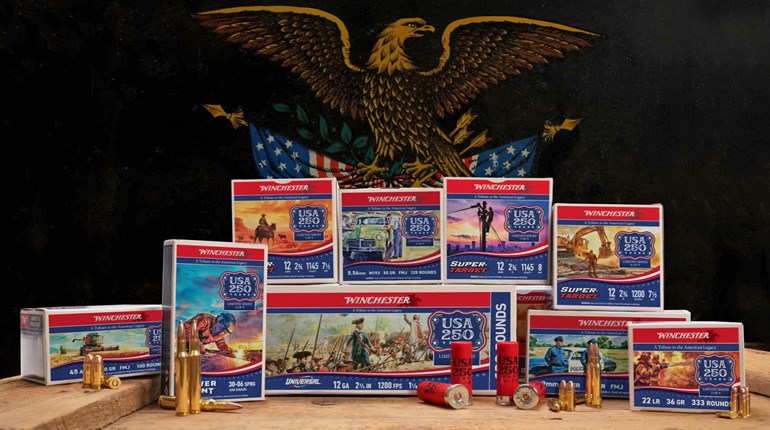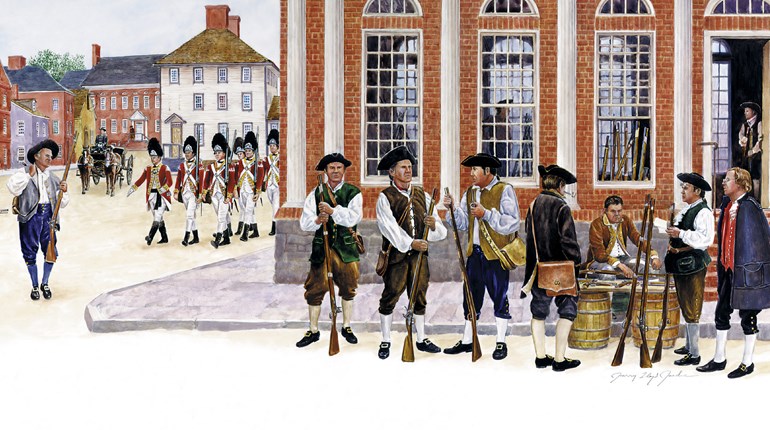
In Part I of this series, I discussed the importance of proper scope selection and mounting for a new hunting rifle. This is generally the first step in the process of getting a rifle ready for use in the field. Now I will cover some of the next steps involving ammunition selection and “zeroing.”
It is important to know that not all bullets and cartridges are created equal, especially with regard to accuracy performance from particular rifles. For instance, I have a few rifles chambered in the venerable .300 Winchester Magnum. I would prefer to be able to shoot the same factory load out of all of them in order to keep things simple, but it’s just not possible because each rifle has its unique preference with regard to what it will shoot in compliance with my accuracy expectations.Those who know me understand that I’m slightly obsessive-compulsive when it comes to rifle accuracy.
Those who know me understand that I’m slightly obsessive-compulsive when it comes to rifle accuracy. A hunting rifle that I use must be at least a 1 Minute of Angle (MOA) performer in order for me to keep it. This is due to the fact that I believe the hunter, not the equipment, should determine the shot’s outcome. If I fail to get the job done, I want to know it was my fault and lack of preparation, not random misfortune caused by substandard gear.
MOA is an angular measurement. When referring to a 1 MOA gun, riflemen are generally stating that, free of operator error and environmental conditions like wind, it is capable of keeping its shots within an area of 1 inch at 100 yards, 2 inches at 200, 3 inches at 300, and so on.
It should be apparent that a 3 MOA rifle is not ideal for a pronghorn antelope hunt where a 300-yard shot can be typical. A “perfect shot” from this substandard gun could hit anywhere within a 9-inch area at that range. The hunter could do everything right, and the rifle could still deliver a miss or wounding blow, even with the antelope standing broadside. This is not acceptable.
A given rifle, however, could be a 1 MOA or better performer with one make of bullet and 3 MOA or worse with another. This is unfortunately the case with my .300 Win. Mags I mentioned. It is best to have a rifle that is not overly finicky when it comes to bullet preference, but those are more the exception than the rule in my experience.
That is why it is important to buy a number of different factory loads and try them in a new rifle in order to determine which it prefers. This can be done by shooting three- to five-shot groups of each kind from a solid bench rest. I generally use a front bag and butt bag in order to fully stabilize the rifle on the bench. During the testing of ammunition, it is best to have no wobble whatsoever—the scope reticle on the target should be rock steady. The idea is to take the shooter out of the equation and test only the rifle and ammunition. One activity that seems to cause more frustration than any other new rifle work is “zeroing” the rifle.
Bullet construction is something else that is important to consider. Some bullets are designed to expand rapidly and even violently fragment upon impact, while others are intended to expand but retain their mass for deeper, more reliable penetration in larger, tougher animals.
There are also “solids” that are not intended to expand or fragment, but are meant to get the job done on big, potentially dangerous game as a follow-up shot. These can often involve the need to penetrate thick skull bone during a frontal charge or dozens of inches of flesh to access the “shut-down” switch if the once-shot animal is headed away.
One activity that seems to cause more frustration than any other new rifle work is “zeroing” the rifle. This is the process necessary to make sure the bullets are hitting the intended target at a given distance. Fortunately, there are some foolproof tricks to making this process go smoothly.
Bore sighting is one such trick, and can be done immediately after mounting the scope. To do this, the rifle must be in a solid rest where it will not move unless desired. I use a Tipton Gun Vise to lock it in place.
Begin by removing the bolt from the rifle, and look down the barrel from the chamber end. Center some small, distant object like a rock or bush in the barrel as you peer down it, and lock the rifle in place with the object still centered. Without moving the rifle or rest, look through the scope. Gently use the windage and elevation adjustments to turn the crosshairs onto the middle of whatever object you chose to center in the barrel. Make a final check through both the barrel and the scope to make sure all is as it should be. Taking the minute or two to complete this process can save significant time, effort and ammo once shooting starts.
When it comes time to shoot, it is best to use a large target with a precise aiming point set up no farther than 25 yards away. The importance of keeping things close at this stage cannot be overstated. This will help guarantee that the bullets hit the paper. (If you don’t hit the target, it’s difficult to “zero” the rifle.)
Once your shots are on the paper, you can easily move forward. If the first group of shots is 3 inches left, for example, this should be multiplied by 4 in order to determine how far left the group would be at 100 yards (4x25 yards = 100 yards). This is because most scope adjustment increments (“clicks”) are either 1/2 or 1/4 inch at 100 yards.TThe goal at this point is to find bullets best designed for the type of animal being hunted and, in most cases, that also shoot consistently into an area on a target that is approximately one inch at one hundred yards.
This simple math indicates the group would have been 12 inches left if the target had been placed at 100 yards (the bullet continues to drift leftward at a constant angle). Each “click” of the scope in this example adjusts ¼ of an inch at 100 yards. Therefore, the shooter should turn the windage adjustment knob 48 clicks (12 inches ÷ 1/4 inch adjustments) in the direction indicated on the knob to move the point of impact to the right.
After this, the rifle should be fired again at 25 yards to confirm that the adjustment went as planned. If it has, the target can be moved to 100 yards in to make the final, precise adjustments. If the rifle is dead-on at 25 yards before the target is moved, the shooter would expect it to be a few inches high at 100 yards because the bullet is being launched from the muzzle at an upward trajectory (this is all related to a thing called “scope offset,” but we can discuss the details another day).
When shooting at 100 yards, do not make adjustments to the scope after individual shots. Shoot at least 3-shot groups and use the center of the group to determine the adjustment necessary to “move” it to the intended point of impact. “Chasing” single shots is guaranteed to stir frustration and can lead to the shooter stomping off of the range, promising to never shoot again.
Once your scope is zeroed, testing of various bullets and factory loads can begin. The goal at this point is to find bullets best designed for the type of animal being hunted and, in most cases, that also shoot consistently into an area on a target that is approximately one inch at one hundred yards. The exception can be large-caliber guns generally intended for dangerous game such as Cape buffalo or brown bear. The standard can be lowered slightly for these.
There are many unsettled questions in the shooting world, and a process known as barrel break-in is one of them. I personally “break in” my rifle barrels during this early shooting and zeroing process, because my anecdotal evidence suggests it helps in certain respects. In Part III of this series, I’ll discuss barrel break-in, along with routine cleaning and maintenance of your hunting rifle.


































